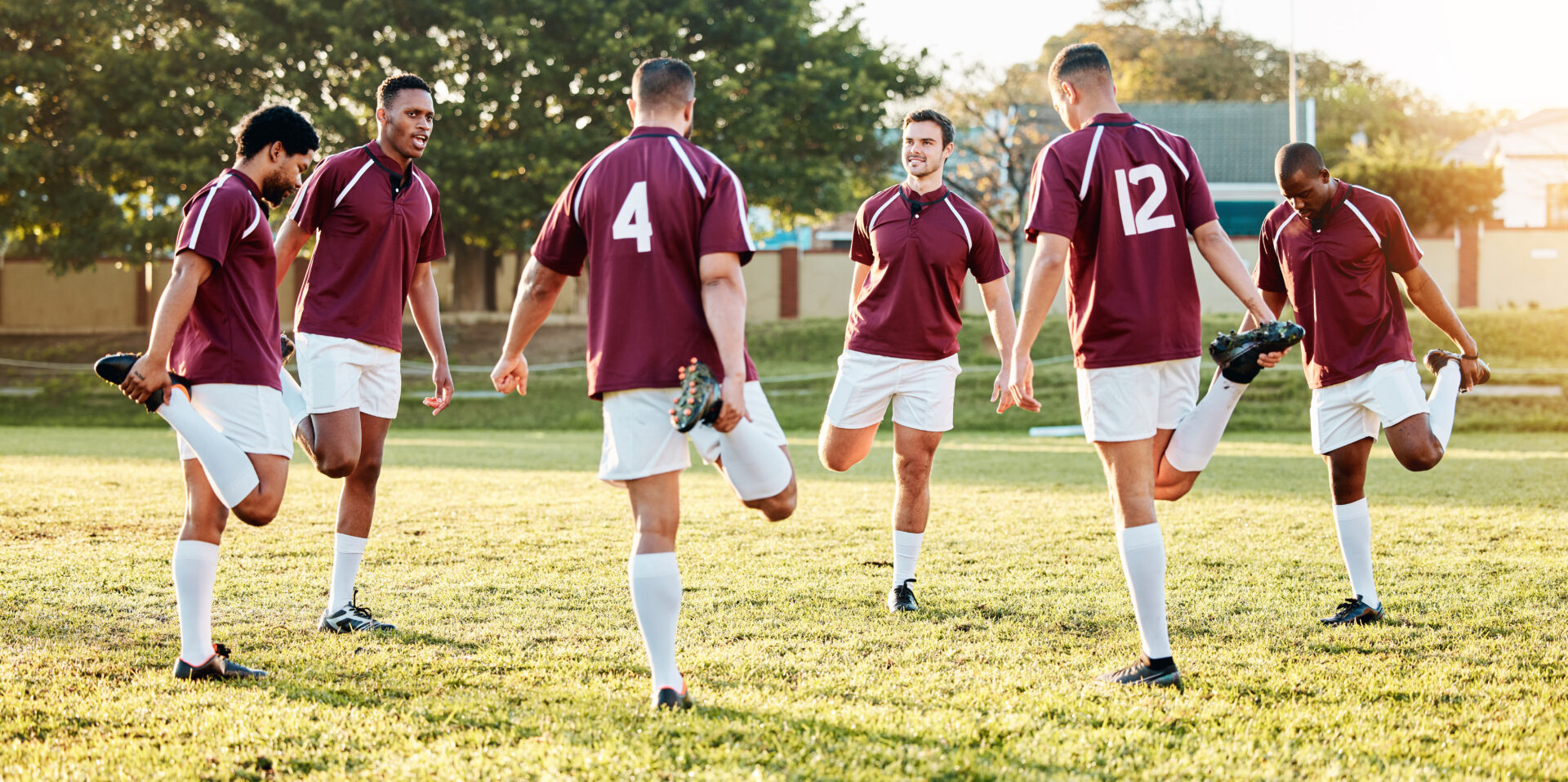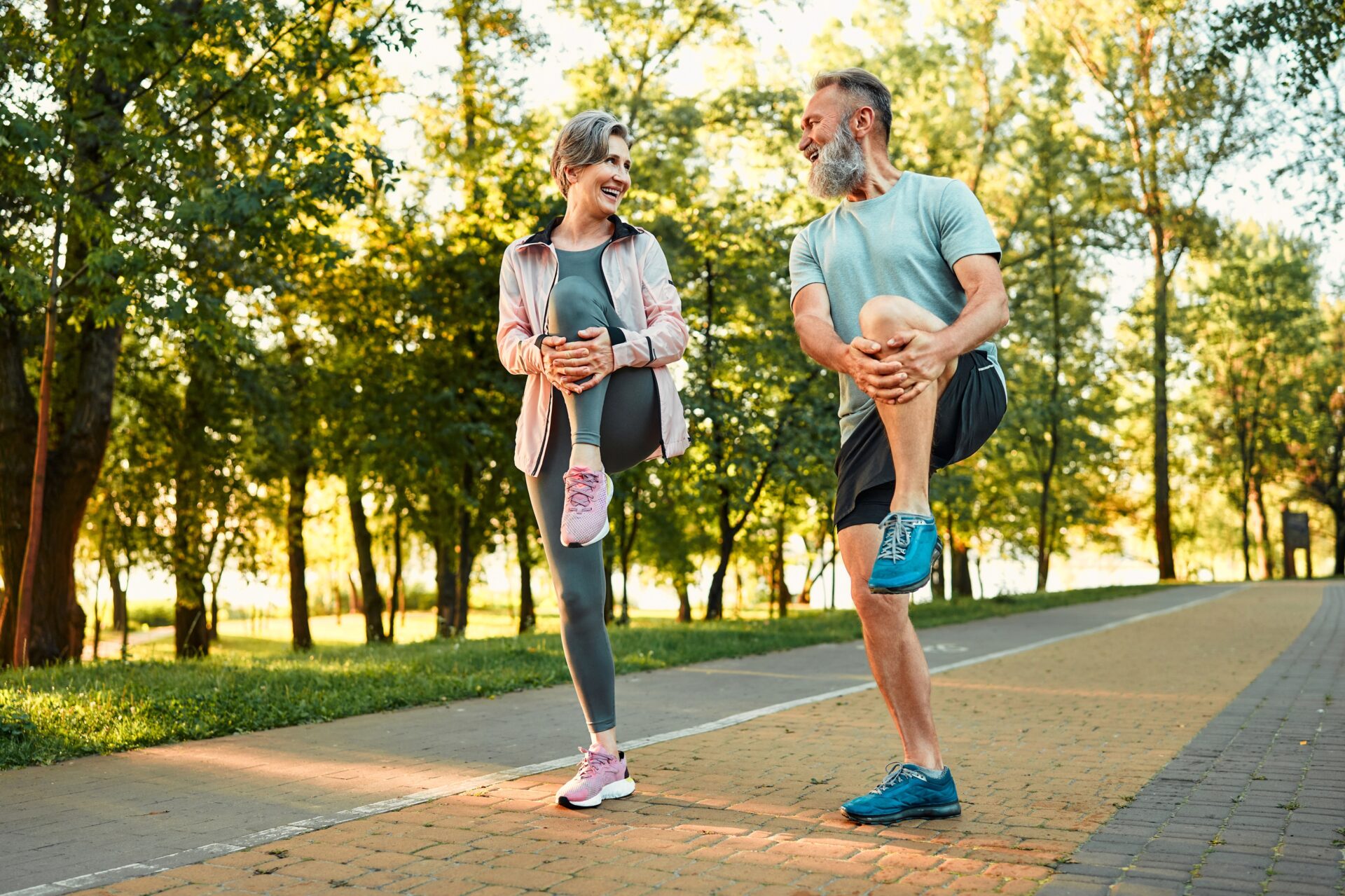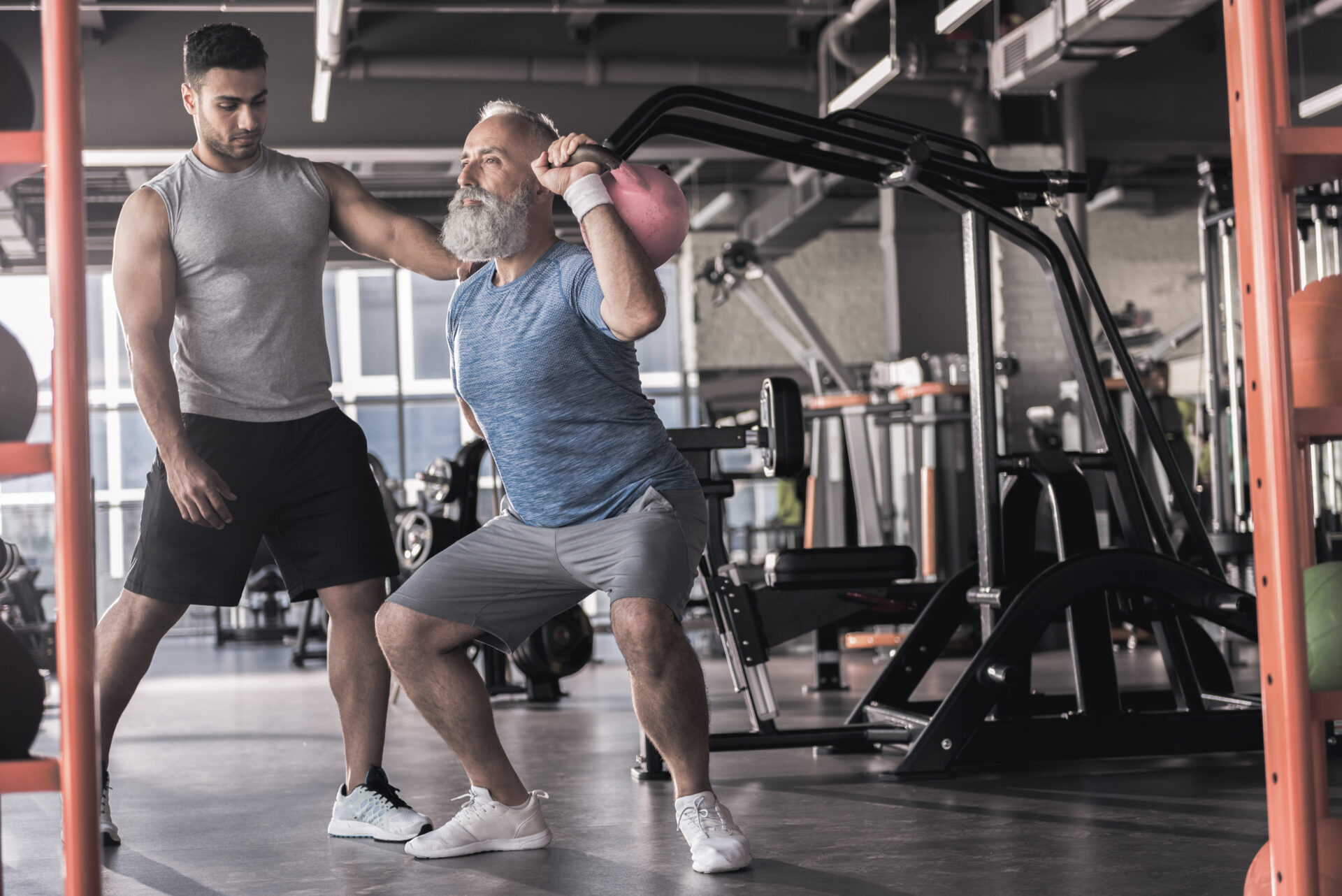Knee pain can significantly hinder your daily activities and athletic performance. At Advanced Orthopedics and Sports Medicine Institute (AOSMI), we understand how knee pain can affect your quality of life and are dedicated to restoring your knee strength and mobility and helping you manage your pain. AOSMI’s Dr. Michael Greller has extensive experience effectively treating knee pain and its many causes.
About the Author: Michael J. Greller, MD, MBA, President and Managing Partner of AOSMI, is a Board-Certified Orthopedic Surgeon with Fellowship Training in Sports Medicine, specializing in shoulder, knee, ankle, and hip disorders. Committed to a patient-centered, conservative approach, he helps patients recover swiftly and return to their active lifestyles. He trained at the New York University (NYU) Hospital for Joint Diseases Orthopedic Institute and at Temple University, which afforded him the opportunity to work with high level athletes. Over the course of his career, he has worked with collegiate and professional athletes across disciplines, including dance, football, basketball, and tennis. He has worked as a physician with the U.S. Open Tennis Tournament, Temple Football and Basketball, and the Alvin Ailey Dance Theater. Dr. Greller’s experience with professional athletes uniquely equips him to offer world-class care, meticulously tailored to your specific needs. Dr. Greller excels in advanced minimally invasive techniques and innovative procedures such as the BEAR ACL Implant, the MACI cartilage repair, orthobiologics, and regenerative medicine.
Causes of Knee Pain
Knee pain can stem from various issues, including sports injuries, degenerative conditions, and overuse injuries. In this section, we will discuss each cause of knee pain and its symptoms in detail.

Overuse Injuries:
- Patellofemoral Pain Syndrome: Also known as “runner’s knee,” or jumper’s knee, this condition results from repetitive motion and stress on the knee joint. Patients experience a dull pain felt at the front of the knee, particularly behind or around the kneecap. Athletes often experience this, especially when improper alignment or muscle imbalance exacerbates it.
- Patellar Tendonitis: Also part of “runner’s knee” or “jumper’s knee,” this condition is also common among athletes who frequently run and jump. It involves inflammation of the patellar tendon, which connects the kneecap to the shinbone; the patellar tendon works with the muscles in the front of your thigh to allow you to straighten your knee, allowing you to run, jump, and kick. Symptoms include pain around the kneecap during running and jumping. The main pain in patellar tendonitis is usually sharp and localized to just below the kneecap. It often intensifies during activities that involve jumping, running, or sudden changes in direction. The pain is also felt when the tendon is pressed or palpated, and it can be more pronounced during or after physical activity.
- Iliotibial Band Syndrome (ITBS): When the iliotibial band, a thick band of tissue running from the hip to the shin, becomes tight or inflamed, it causes ITBS. It commonly affects runners and cyclists, causing pain on the outside of the knee.
- Stress Fractures: Stress fractures are tiny cracks in the bone that occur due to repetitive force or overuse, often seen in athletes engaged in high-impact sports such as running or basketball. In the knee, stress fractures can develop in the patella (kneecap) or the tibia (shinbone). Symptoms include localized pain that worsens with activity and improves with rest, swelling, and tenderness. Early diagnosis and management are crucial to prevent the fractures from worsening, which may include rest, modified activity, and physical therapy to address any contributing biomechanical issues.
Sports Injuries:
- ACL Tears: The Anterior Cruciate Ligament (ACL) stabilizes the knee during rotational movements. ACL tears often occur in sports that involve sudden stops and changes in direction, like soccer, basketball, skiing, and pickleball. When you tear your ACL, you may hear a loud “pop.” Symptoms include severe pain, rapid swelling, and instability.
- Meniscus Tears: The menisci are C-shaped pieces of cartilage that act as shock absorbers in the knee joint. Twisting or turning quickly, often with the foot planted and the knee bent, can cause tears. Symptoms include pain, swelling, clicking, and difficulty moving the knee
- MCL Injuries: The Medial Collateral Ligament (MCL) runs along the inner part of the knee and helps stabilize it. MCL injuries often result from a direct blow to the outside of the knee, common in contact sports like football and hockey. Symptoms include pain, swelling, and a feeling of instability in the knee.
Degenerative Conditions:
- Knee Osteoarthritis: This wear-and-tear form of arthritis occurs when the cartilage cushioning the ends of bones in the knee joint gradually deteriorates. This leads to pain, stiffness, and decreased mobility, particularly in older adults.
- Rheumatoid Arthritis: An autoimmune disorder, rheumatoid arthritis causes the body’s immune system to attack its tissues, including the joints. This results in painful swelling, joint deformity, and erosion of bones and cartilage.
Diagnosing Knee Pain with Evaluation and Testing
The importance of a thorough evaluation and proper testing to achieve an accurate diagnosis cannot be overstated. Consult the knee pain experts at AOSMI to ensure you receive a proper diagnosis founded on many years of knowledge and experience.

Evaluation: An orthopedic physician must conduct a thorough evaluation to ensure an accurate diagnosis. This includes:
- Medical History: Discussing your symptoms, activity level, and any previous injuries or conditions with your knee pain specialist.
- Physical Examination: Assessing the range of motion, swelling, tenderness, and stability of the knee.
Tests:
- Joint Aspiration: Also known as arthrocentesis, this involves drawing fluid from the knee joint with a needle. The fluid can be analyzed for signs of infection, gout, or other conditions causing knee pain.
- Diagnostic Imaging: X-rays can reveal bone damage or alignment issues.
- Advanced Diagnostic Imaging: MRI scans provide detailed images of soft tissues, including ligaments, tendons, and cartilage. CT scans offer detailed cross-sectional images of bones and joints. Bone scans detect abnormalities such as fractures, infections, or tumors by using a small amount of radioactive material that highlights areas of bone metabolism, revealing issues not visible on standard X-rays.
Knee Pain Treatment Options
Various treatment options, ranging from conservative (non-surgical) management techniques to advanced surgical interventions, help alleviate knee pain and improve functional strength. Consulting with the orthopedic knee pain specialists at AOSMI will help you find the right treatment option for your circumstances.

- Non-Surgical Knee Pain Treatment:
- RICE: Rest, Ice, Compression, and Elevation (RICE) is a first-line treatment approach for acute knee injuries. Rest the knee to avoid weight-bearing, use ice packs for 20 minutes several times a day (wrapped in a cloth to protect the skin), apply a soft bandage for compression, and elevate the knee above heart level to reduce swelling.
- Activity Modification: It is crucial to reduce or modify activities that exacerbate knee pain. This might involve switching to low-impact exercises such as swimming, cycling, or using an elliptical machine. These activities minimize stress on the knee while maintaining fitness. You should also avoid repetitive knee stressors and incorporate rest periods to prevent overuse injuries.
- Medication Management: Nonsteroidal anti-inflammatory drugs (NSAIDs) are commonly used to manage knee pain by reducing inflammation and providing pain relief. Common over-the-counter NSAIDs include ibuprofen (Advil, Motrin), naproxen (Aleve), and aspirin.
- Physical Therapy: Tailored exercises and stretches strengthen the muscles around the knee, improve flexibility, and reduce pain.
- Bracing: Knee braces provide support and stability, particularly for those with ligament injuries or instability.
- Corticosteroid Injections: These anti-inflammatory injections offer significant pain relief by reducing inflammation within the knee joint.
- Surgical Interventions for Knee Issues:
- Joint Preservation Surgery: Key procedures include
- Matrix-Associated Autologous Chondrocyte Implantation (MACI), a cutting-edge regenerative procedure in which the patient’s own cartilage cells, harvested arthroscopically, are cultured and then transplanted into the damaged area for effective repair. MACI works by using a small sample of your own cartilage to grow new cells. These cells are then used to create strong repair tissue for your damaged knee cartilage. MACI can help reduce pain, improve knee function, and provide long-lasting results, helping you get back to the activities you love. These methods help preserve the natural knee joint and delay the need for a total knee replacement, especially beneficial for younger patients.
- Osteochondral Allograft Transplant: this procedure uses donor bone and cartilage plugs to repair large areas of damaged cartilage. It is typically used when there are extensive defects that cannot be repaired using the patient’s own tissue.
- Osteochondral Autograft Transfer System (OATS): this involves transferring bone and cartilage from a non-weight-bearing area of the patient’s own joint to a damaged area. OATS is effective for smaller defects and helps restore the joint surface with the patient’s own tissue, promoting a natural repair.
- Implants: implants are crucial for repairing a variety of injuries and conditions – including repairing cartilage that has become loose in the knees. The direct fixation procedure involves using specialized implants or anchors to secure damaged structures such as cartilage or ligaments directly within the knee joint, promoting stability and optimal healing. In orthopedic procedures, sutures play a crucial role. Sutures are medical threads specially designed to stitch or secure tissues together. In knee cartilage repair, sutures are used to anchor and stabilize loose cartilage fragments back into their original position within the joint. This process restores the integrity of the cartilage surface, which is essential for smooth joint movement and reduced pain during activities.
- Microfracture: an arthroscopic technique that stimulates cartilage regeneration by creating tiny fractures in the underlying bone, encouraging new cartilage growth.
- Osteochondritis Dissecans (OCD) Fixation: is a treatment for cartilage injuries in the knee. This method uses special, bioabsorbable tools like the PLLA Chondral Dart and Bio-Compression Screws to repair the damage. The Chondral Dart secures the cartilage in place without touching sensitive joint surfaces, while the Bio-Compression Screw provides strong, secure fixation for larger injuries without the complications that can come with metal screws. These tools are bioabsorbable, which means that they gradually dissolve in the body, eliminating the need for removal surgery and reducing the risk of irritation. This approach helps the cartilage heal properly, allowing you to return to your normal activities.
- IntraOsseous BioPlasty (IOBP): is a treatment for stubborn bone injuries called bone marrow lesions (BMLs). These can happen from conditions like fractures, osteoarthritis, bone bruises, and dead bone tissue (osteonecrosis). If regular treatments don’t help, IOBP might be the solution. This procedure has two main steps, decompression and injection. Decompression: The damaged area in the bone is carefully decompressed to relieve pressure. Injection: A special mix of healing materials is injected into the area. This mix includes platelet-rich plasma (cPRP) from your own bone marrow, combined with a bone matrix substance. This mix helps your bone heal naturally by providing a structure for new bone to grow, growth factors to stimulate repair, and stem cells to generate new bone tissue. The goal is to relieve pain and improve bone health.
- Arthroscopic Procedures: Minimally invasive arthroscopic surgery involves small incisions and the use of a camera to guide the surgeon. This approach minimizes tissue damage and reduces recovery time.
- Surgeons commonly perform procedures such as ACL reconstruction and meniscus repair arthroscopically.
- Patella Stabilization and Re-alignment Procedures: These procedures address issues with kneecap (patella) instability and misalignment. Techniques may include realigning the patella, tightening or releasing surrounding tissues, and stabilizing the knee joint to prevent dislocations and improve knee function.
- Advanced Surgical Procedures: One of the latest innovations in ACL treatment is BEAR (Bridge-Enhanced ACL Restoration), the first procedure approved by the U.S. Food and Drug Administration (FDA) that enables the body to heal its own torn ACL. This technique uses a special implant to stimulate the body’s natural healing process, offering an alternative to traditional ACL reconstruction. Dr. Greller first performed the BEAR Implant procedure in 2022. Restoring the ligament instead of replacing it has several advantages – clinical studies have shown faster recovery of muscle strength and higher patient satisfaction regarding readiness to return to sport compared to traditional ACL reconstruction, which remains the standard of care today.
- Joint Preservation Surgery: Key procedures include
-
-
- This is a rapidly growing field. Our surgeons are constantly using novel techniques to help patients return to sports and quality of life activities. By integrating the latest advancements and innovative procedures, we strive to provide our patients with the best possible outcomes and the quickest path to recovery.
-
Visit AOSMI for Expert Knee Pain Treatment
If you’re suffering from knee pain, don’t let it limit your life. Our team of orthopedic knee specialists is committed to providing personalized care and utilizing the latest medical advancements. We aim to help you strengthen your knees and manage your knee pain so that you can regain your mobility and return to the activities you love. Schedule an appointment with Dr. Greller at AOSMI today and take a meaningful step towards a higher quality of life.







